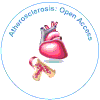开放获取期刊获得更多读者和引用
700 种期刊 和 15,000,000 名读者 每份期刊 获得 25,000 多名读者
抽象的
Radiation-Induced Arterial Injury in the Upper Limb
Tetsuo Yamanaka, Toru Fukatsu , Yoshimaro Ichinohe, Hirotaka Komatsu and Yasunobu Hirata
In recent years, radiation combination therapy for malignant tumors has improved cancer survival, thereby increasing the importance of radiation therapy. In 1959, radiation-induced arterial injury (RIAI) was first reported by Thomas as a condition in which stenosis and obstruction of the blood vessels arise within the irradiated area following radiation therapy; there have been several subsequent reports regarding this. Although RIAI has been examined and reported, to date, there have been few reports of RIAI in the arteries of the upper limbs, and it cannot be said that the clinical features and treatment of this condition have been thoroughly examined and established. In particular, irradiation for breast cancer can cause stenosis and obstruction in the area extending from the subclavian artery to the axillary artery; however, the associated symptoms resemble the symptoms of lymphedema and neuropathy following surgery for breast cancer, and it is assumed that diagnosis is difficult, and many patients has been overlooked. Thus, in the event of such patients, careful examination should be performed with RIAI in mind. Irradiation can cause arteriosclerosis, and therefore, it is important that RIAI becomes common knowledge; further examinations should also be conducted in a larger sample size.

 English
English  Spanish
Spanish  Russian
Russian  German
German  French
French  Japanese
Japanese  Portuguese
Portuguese  Hindi
Hindi